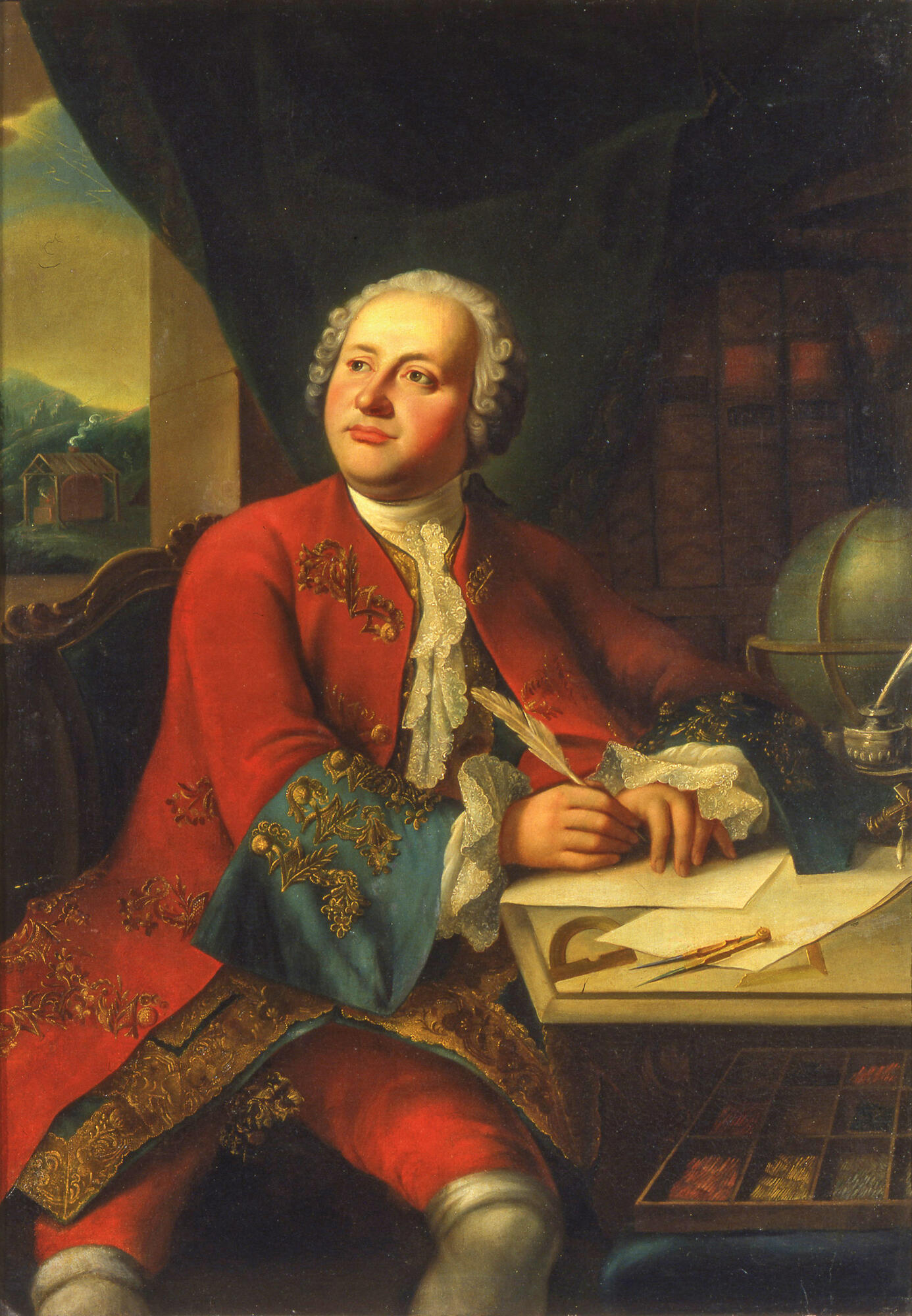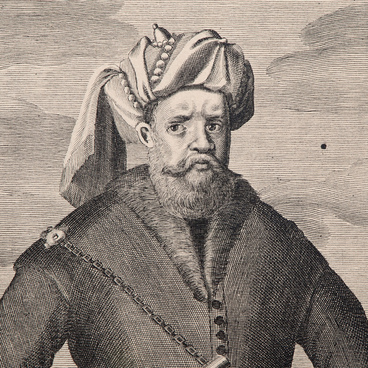The portrait, which is presented in the State Historical Museum, is one of the few reproductions of the only lifetime portrait of Mikhail Lomonosov. The original was created in 1755 by Georg Kaspar Joseph Prenner, an Austrian artist, the son, and student of court painter Anton Joseph Prenner. The original canvas was lost.
The painter depicted the prominent Russian scientist, historian, poet, and artist Mikhail Lomonosov at his desk. In the background, one can see bookshelves with thick leather-bound volumes. They are partially hidden from the viewer by a dark green curtain in the upper left corner, above Lomonosov’s head. On the table, next to the papers, the artist painted objects which were typical for a portrait of a scientist: a globe, a compass, and drawing tools. In the lower right corner, one can notice a box with dividers. They contain samples of smalt — a type of colored glass, which back then was used for mosaic art.
A building of the colored glass factory is visible through the window located behind Mikhail Lomonosov. He founded it in 1753 in the territory of his own estate –the village of Ust-Ruditsa near Saint Petersburg. In addition to smalt, the factory produced colored beads and glass beads. Later, Ust-Ruditsa manufactured tableware, perfume bottles, colored glass brooches and cufflinks, even decorative garden figurines. However, smalt was its main product. Mikhail Lomonosov hoped to advance mosaic art in Russia, he worked on new compositions of the glass in order to expand the color palette and at the same time use inexpensive dyes. The scientist even dedicated an entire ode to glass art, which he sent to his friend, statesman and philanthropist Ivan Shuvalov:
The painter depicted the prominent Russian scientist, historian, poet, and artist Mikhail Lomonosov at his desk. In the background, one can see bookshelves with thick leather-bound volumes. They are partially hidden from the viewer by a dark green curtain in the upper left corner, above Lomonosov’s head. On the table, next to the papers, the artist painted objects which were typical for a portrait of a scientist: a globe, a compass, and drawing tools. In the lower right corner, one can notice a box with dividers. They contain samples of smalt — a type of colored glass, which back then was used for mosaic art.
A building of the colored glass factory is visible through the window located behind Mikhail Lomonosov. He founded it in 1753 in the territory of his own estate –the village of Ust-Ruditsa near Saint Petersburg. In addition to smalt, the factory produced colored beads and glass beads. Later, Ust-Ruditsa manufactured tableware, perfume bottles, colored glass brooches and cufflinks, even decorative garden figurines. However, smalt was its main product. Mikhail Lomonosov hoped to advance mosaic art in Russia, he worked on new compositions of the glass in order to expand the color palette and at the same time use inexpensive dyes. The scientist even dedicated an entire ode to glass art, which he sent to his friend, statesman and philanthropist Ivan Shuvalov:



